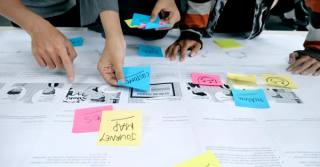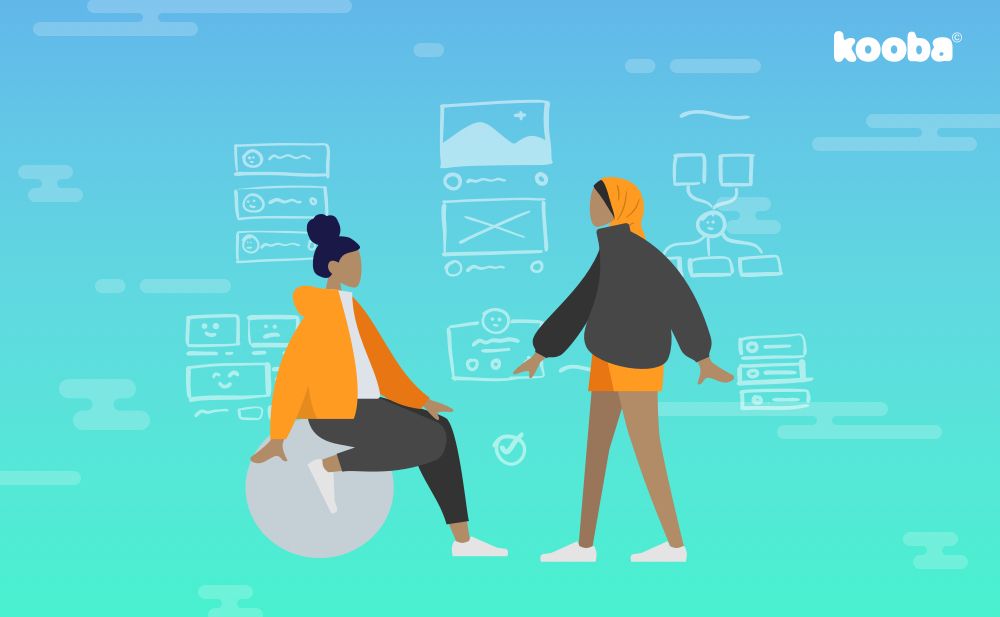You would have to go a long way these days to find a company that doesn’t claim to put its customers first.
But the reality doesn’t always match up to the fine words we hear in public. We’ve all worked in organisations where sometimes it feels like the customer is almost forgotten in a veritable orgy of corporate navel gazing.
That this can happen should not come as a surprise. For one thing, it is very, very easy to fall in love with our own ideas. In particular, once we’ve spent time scoping and developing product and we’ve invested in our brand, we feel a sense of ownership. In fact to some extent we can almost become protective about this work.
In addition, in many companies very few people ever see a customer, never mind spend a huge amount of time talking to them. When they do, it is often filtered through the world of the market researcher and de-personalised to such an extent that it loses impact. Words and figures in a report don’t carry the same impact as real conversation and feedback.
So what we have is a situation in which it is far too easy for perception and reality to diverge. And that’s why you’ll hear executives claim ‘our customers love us’ when the customers themselves would almost certainly tell a different story.
Fortunately, help is at hand - from a perhaps unlikely source. The design process, and specifically the online design process, can bring customers into the fold and improve products and services as a result.
How design can help
Let’s remind ourselves that all other things being equal, companies that make the effort to get close to their customers and really understand their motivations tend to be more successful than those that don’t.
The latter end up in the ‘where are they now’ file, whilst the former go onto fame and fortune. Or something like that.
So how can design help ensure you end up in the right place? Simply by following a process that involves the customer (and prospect) at every step of the way. That doesn’t just gives us better solutions to our design challenges - it also humanises the customer and has benefits well beyond the project itself.
Before going further let’s make sure we understand what we mean by design, and online design in particular.
Steve Jobs probably said it best: “Design is not just what it looks and feels like. Design is how it works”
So in this context, design is the entire process through which prospects and customers discover your business, interact with your business, and learn about your business in the online environment.
And to deliver great experiences during that process that help deliver on business objectives, you need customer involvement as often as possible. And that doesn’t just help create great designs, it also delivers great insight across the board and opens up new ways for the business and the customer to interact.
Involving customers in design: practical steps
To demonstrate how that works, let’s look at some of the specific ways we bring customers into the design process at Kooba.
Firstly, we like to speak to customers and prospects during the workshop phase. We start from scratch and look for their own understanding of the client’s business. Although in many cases these customers have been introduced to us by the client, we’ll frequently see huge differences in how the business is perceived.
Although we would typically speak to customers independently (in order to ensure we get honest answers!), if budget allows we encourage round table conversations as well that can be of extraordinary benefit. Sometimes it is almost as if by framing a conversation as being about ‘design’ we create an opportunity to speak more freely than would be the case in a more general or commercial conversation.
We are always keen to continue customer involvement through the prototype and wireframing stage. Although the client has the final say, it can be enormously beneficial to see reactions from their customers.
Here, for example, is where we might often see a disconnect in the structure and categorisation of information, or the relative importance given to different aspects of the client’s business. What starts as a conversation about design then becomes something more useful again: an examination of what is really important about the business - and what isn’t.
Finally, and again if budget allows, we like to run user testing throughout our design and development process. We’ve written about the subject before on the blog, but didn’t touch on the fact that no method is quite so effective when it comes to seeing what customers really think about your business and product.
Within the context of the ‘speaking aloud’ protocol you’ll hear all sorts of things that would otherwise pass you by. It gives a unique insight into the customer’s take - if you’re prepared to listen.
That brings us back to our first point.
The design process brings with it unique opportunities for really getting to know the customer. In turn that knowledge leads to superior products and services and competitive advantage. But only if you are listening.
I’ve seen many clients become defensive to the point of rejecting customer insights out of hand. Don’t let that happen to you. To be sure, the customer isn’t always right - but do them the honour of assuming they are until proven otherwise!









